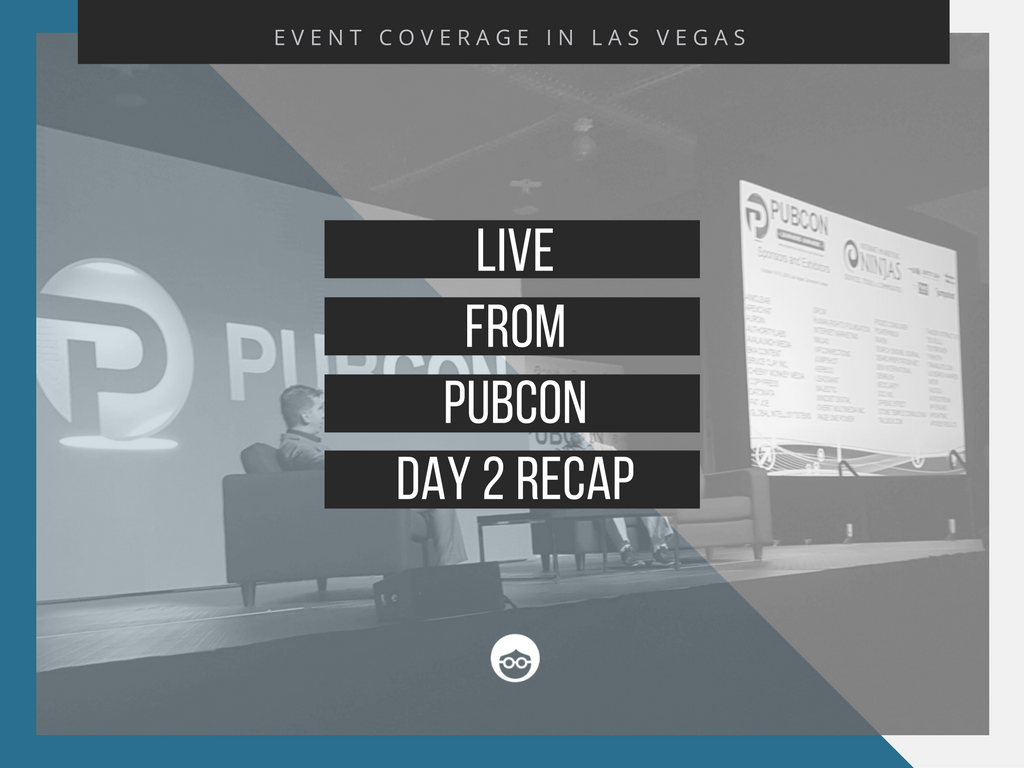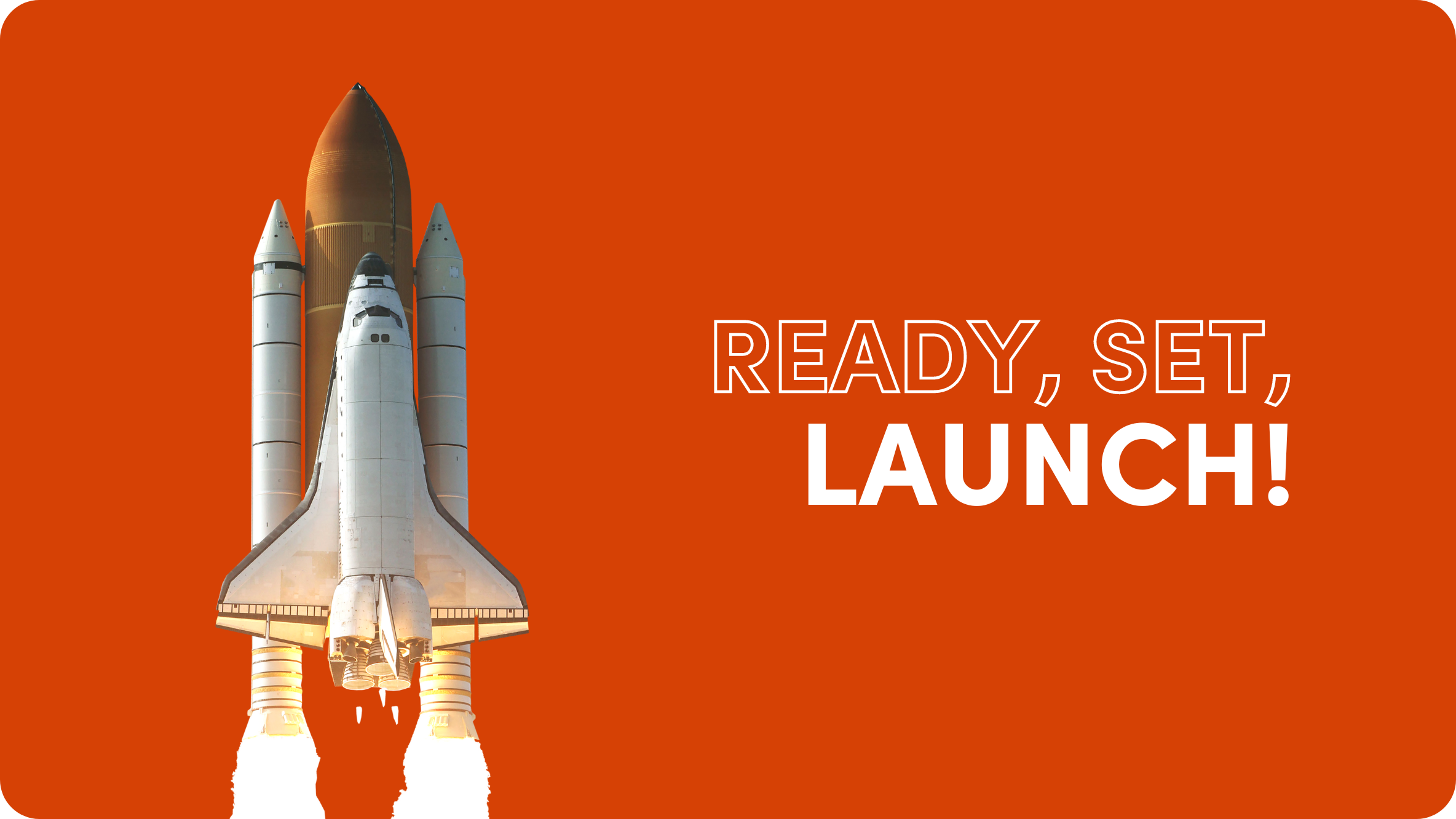Pubcon 2016 Las Vegas: Day 2 Recap
Here’s a recap of my second day at Pubcon 2016, Las Vegas.
After a really nice networking party last night we started our day early at 8:00AM with a breakfast interview with the one and only, Garry Illyes, from Google (pictured above).
What is Google RANKBRAIN?
According to Garry, Rankbrain tries to predict the result set and adjust the ranking based on the query. It works well for long tails.
Rankbrain collects data per query based on similar queries. It doesn’t evolve with links — it only evolves similar queries. It is part of the core algorithm of Google.
Rankbrain came about because Google wanted a machine learning ranking tool to help adjust queries, as well as queries that they hadn’t seen previously.
Garry says that sometimes the data goes wrong, or there’s isn’t enough data set for a specific query. In this situation, the manual algorithm is the best solution to see the best search results.
Penguin 4.0: What has changed?
Garry dug into Penguin 4.0, explaining the three major changes:
- Real-time algorithm
- Discounts bad incoming spam (links) to your site/page (i.e. detects negative SEO)
- It can work on specific pages instead of demoting a whole site for incoming spam.
Garry says that his team spent hours recognizing empty forum profiles that link to clients’ websites. These links are discounted by penguin 4.0 automatically now.
“If you have only bad links, then Penguin won’t help you,” says Garry.
If you get hit by a manual penalty, Garry also recommended removing spammy links and making reconsideration requests, as the manual spam team will appreciate it more.
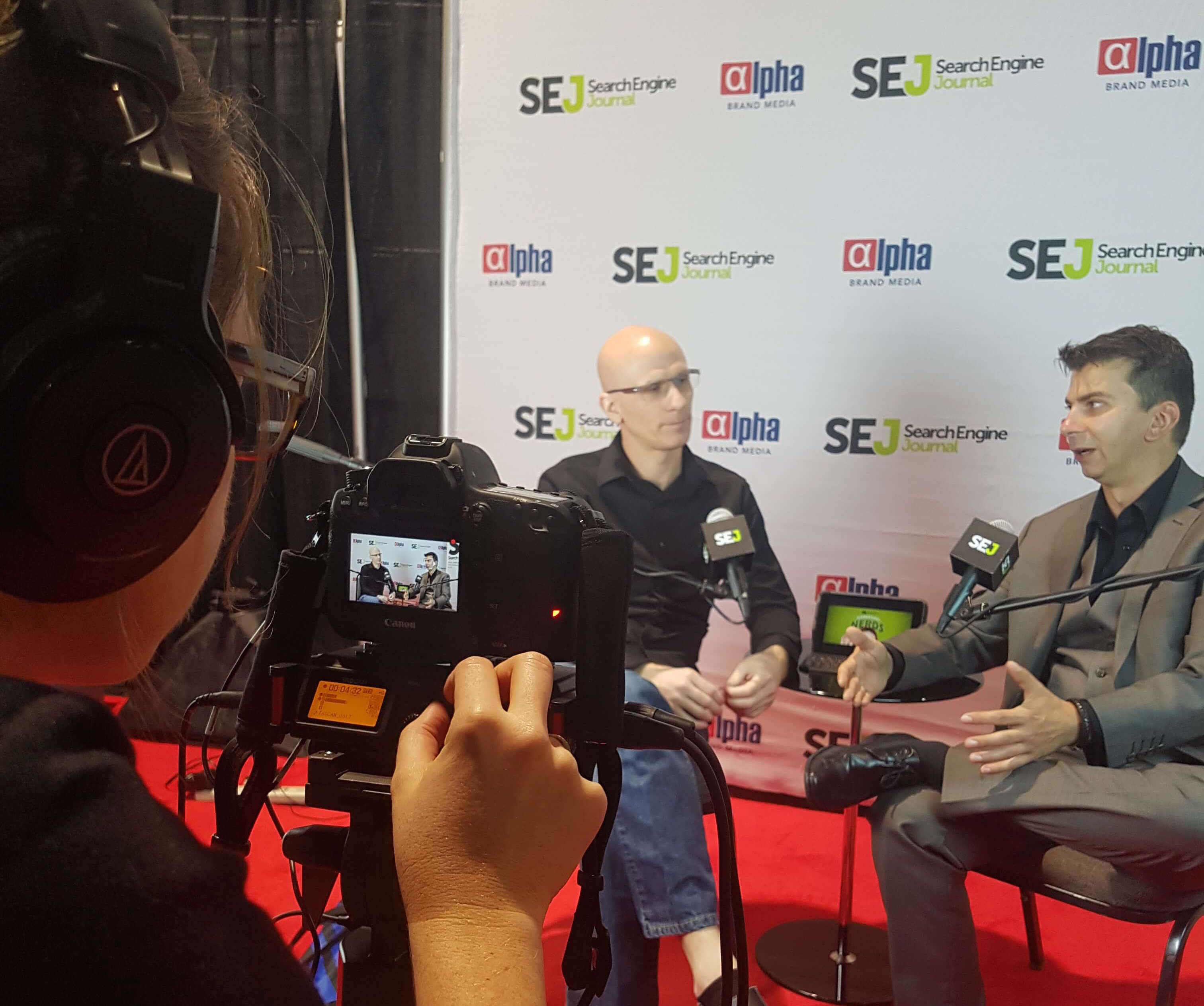
User engagement: how does Google measure it?
Next up, Garry answered some questions about how Google measures user engagement. he described the following:
- Google looks at CTR or personalization: What works best for the users and if he or she likes the content or not. This is how Google learns the user intent when searching for this query. It is also how it tries to rank the results.
- Comments are also important for Google. Google recognizes them if the site is an authority and engaging users.
- Rich snippets are based on user engagement as well.
Is the English version of the algorithm better than the European algorithm?
Garry also answered questions about the algorithm and how it works for different languages. He explained that Google tests the algorithm with different kinds of queries in different locations. It has been trying to assess what works better and the team covers more than 50 languages.
He then went on to discuss the disavow tool. When asked if we should still use it, he said Google was still using it so, sure.
Keynote by Robert Scoble
Next up for me was the keynote by Robert Scoble. Robert talked about VR and the future of wearable devices and technology. He explained that we’d be likely to see a lot of VR and mixed reality until the end of next year. (No surprise here.) Microsoft, Apple, and Facebook are already investing and focusing on a mixed reality and it is coming to your brand sooner than you think. It will ultimately change user experience and user behavior.
He showed some really cool examples of this too:
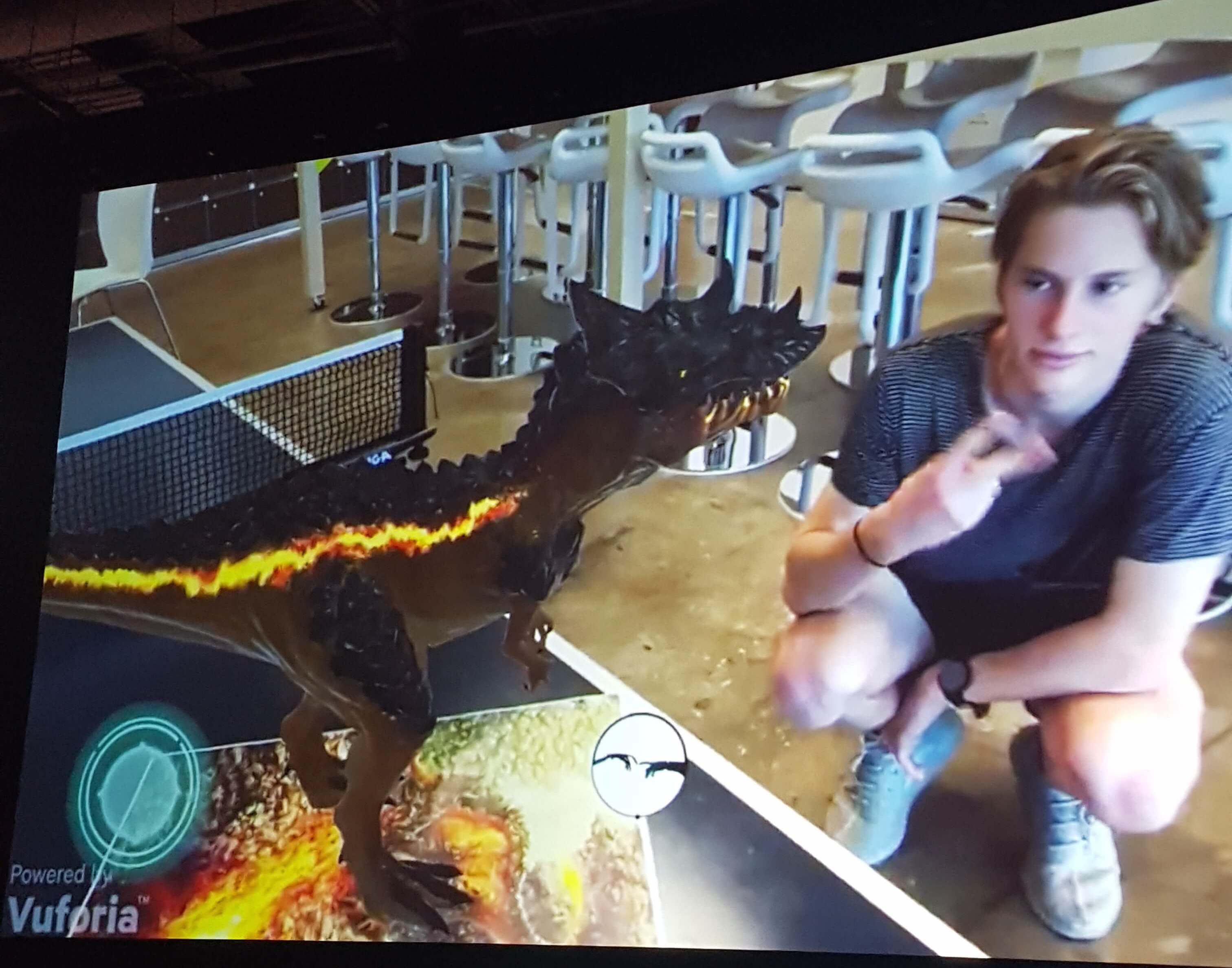
Session 2: Visual Content Marketing
A Guide to visual content by @matt_siltala
Some facts Matt presented: Content with images or infographics saw 94% increase in views versus content without it.
He also seeded the question: “Is Pinterest the new Google?” Perhaps — as its centrality as a visual search engine is undisputed.
However, overall, the bigger question is — are you paying enough attention to your visual content? Are you creating enough interesting and visual content that people will want to share? Can you gain leads with it? Are you sparking new conversation with your visual content?
Matt also dipped into lasting content. He talked about creating evergreen content that will still be relevant for you for years to come.
Another item he discussed was Facebook Live. He talked about the huge opportunity — how you can include exclusive offers to FB live followers and how it is totally FREE for your brand. The final message: Take advantage of this platform as it has huge business potential.
Visual content retention by Dave Snyder, @davesnyder
Dave Snyder talked about how multimedia content uses different content types to create something unique and engaging with audiences.
“Infobesity” It is a real thing” explained Dave.
He went on to discuss how to cut all the noise and stand out. The answer? You’ve gotta trick your audience the same as you’re tricking your kids into eating healthy.
The key:
Find the people in their “learn more” mode. This is what are they looking for in the first place.
Take your webinar and turn it into an ebook or whitepaper. Use the same content and present it in other forms to different learning styles.
You can also crunch your content into smaller pieces in order for it to be easier to digest.
Another option — take big ideas and break them into interactive images so your users can understand things easily.
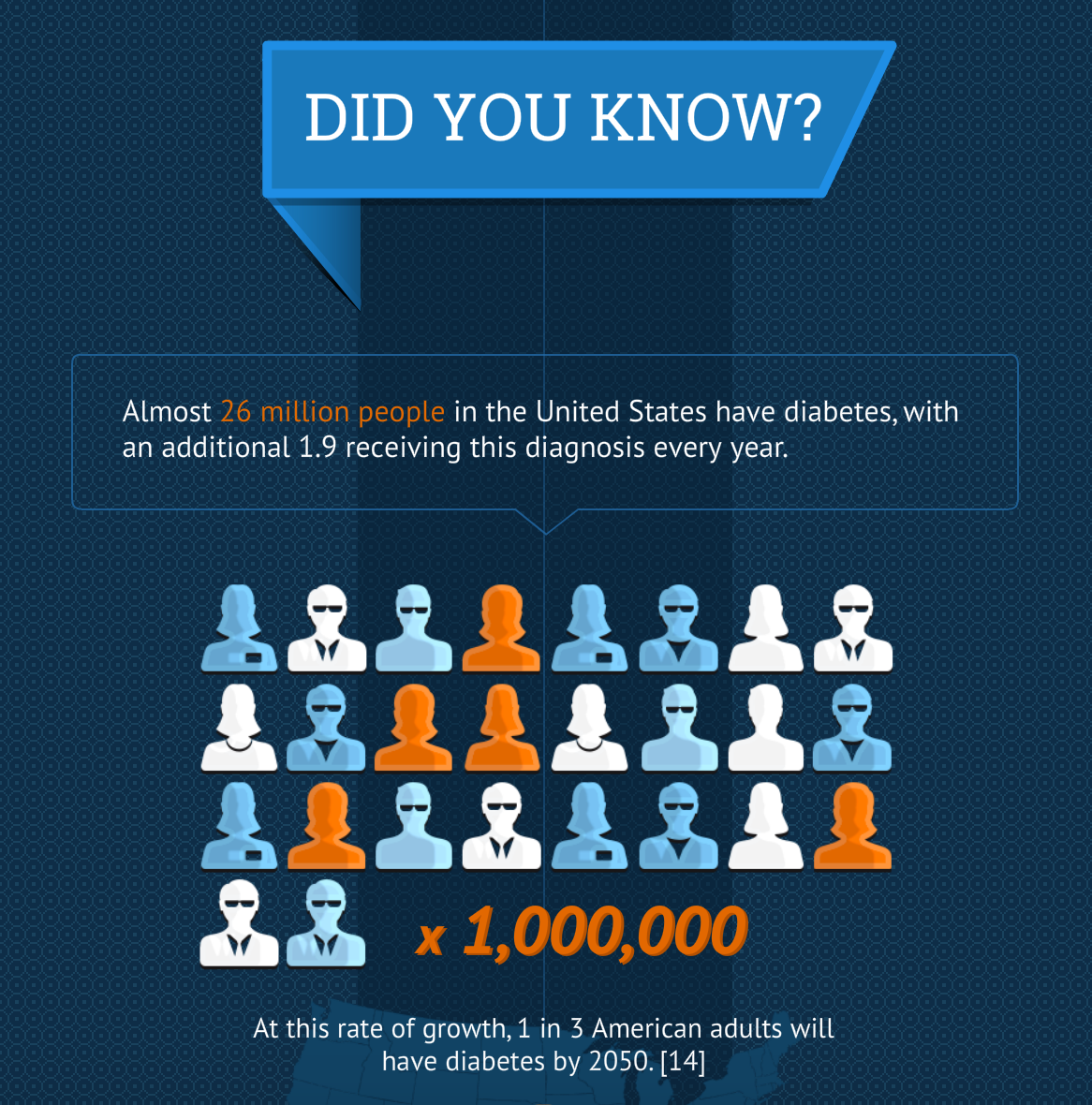
After you create the perfect story and your best content, SYNDICATE IT. You have to promote your content, otherwise, all the efforts you’ve put into it will be for nothing. Remember you need to drive sales out of this content.
Content marketing in 2016: Trends and Topics, A Session by Dave Rohrer and Matt Siltala
This session talked about how to create great content marketing in 2016. Here were some topics and trends that Dave and Matt told us to consider.
Whereas early content marketing included link baiting and maybe even cute cats, new rules are in place today. Nowadays, the key is to keep your content marketing simple. Go for a specific audience and target your content.
Some other key takeaways:
Videos: How to use videos to grow your traffic? We’re not talking about $$$ worth of videos. You can shoot everywhere from anywhere and simply answer questions related to your profession.
Influencers: Start using influencers on multi- social channels. Every social channel should have its own content approach: from Snapchat to Instagram, twitter, Facebook, to LinkedIn.
In the end, you don’t need to have a real huge budget to get creative!
(At this point Dave pulled out ”THE BEARD.”)
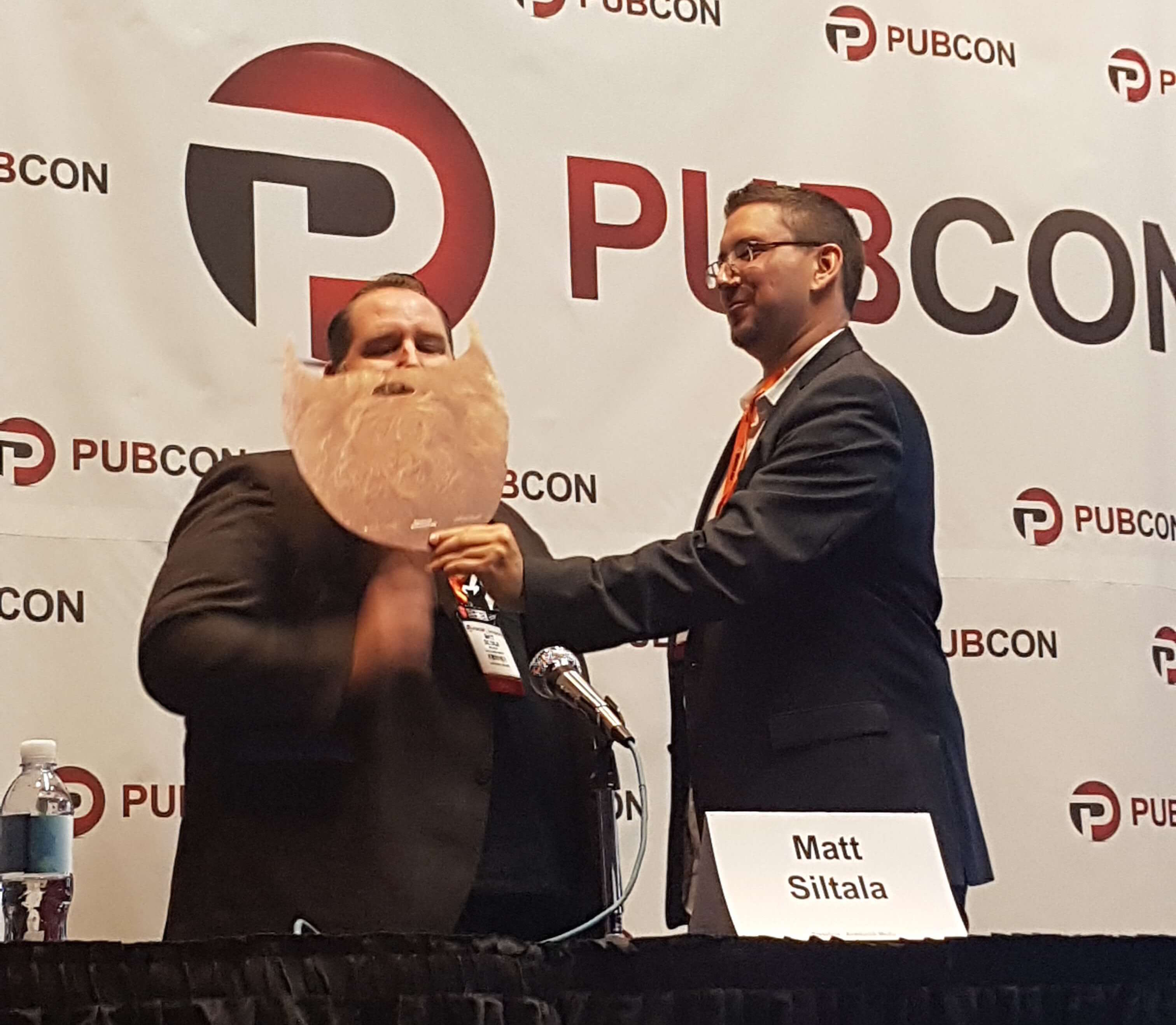
Now, that can easily go viral, right?
Keynote, Debra Jesper @debrajesper
The Power of the visual
Debra reminded us all that our people are our brand. She explained that people love to follow real people and recommended tapping into your CEO. You’ll see his or her Twitter generate more followers than the company Twitter.
Additionally, remember that your audience HAS AN AUDIENCE. They are sharing and tweeting. They can ruin you and they can build you. Don’t forget — and in case you do, here’s some reminders of how things can literally explode…
Session: SEO 2016: New realities, New Beginnings, Duane Forrester @DuaneForrester and Bill hunt @billhunt
- Mobile first world: The default web experience is mobile. Progressive web apps are going to be a massive issue for our mobile experience. Said Duane, “You’re probably thinking: oh no, my company is going to die…! Well, maybe it should.” If you’re not thinking of your user’s mobile experience, then you needed to start doing it yesterday. If you’re using emulators for your mobile experience strategy and testing it through your site performance on mobile, stop it immediately. The point it to use real devices as much as you can. Your biggest mistake is not moving fast enough. Do not think you have time points. MOVE FASTER.
- Answer boxes and user expectations: You need to understand the intent of your users and give them the answers inside your content. Don’t do crap answers! Dive deeper into the gate. Be an authority and DO NOT link to other authorities that show more answers to it. Do it yourself. This is RankBrain in action!
- Maximize findability in a multi-channel world: Are you in good hands with Google? The best practice is when you have a paid campaign for a keyword and at the same time you rank really high on the same terms in the organic channel.
- SEO is more technical (aka the shrinking SERP): Make sure that you have the answers and you’re the authority as we’re going to see a lot more ads in the nearest future within search results.
- SEO is less technical (aka Everybody’s doing it): You need to start combining your SEO with your content marketing. Let people know what you have- become part of the discussion. You need a very hybrid SEO expert to manage all these shining objects. Don’t hit the wall with just amplifying ANY content. Plan. Target. Execute. Have a loyalty program.
- Rankbrain and shiny object syndrome: Test your site search and see what queries your users are not getting any results. That is your problem. Fix it. This is what Rankbrain is trying to do.
